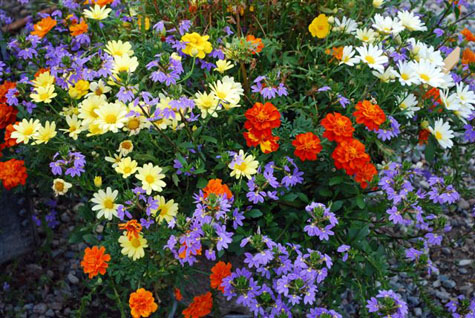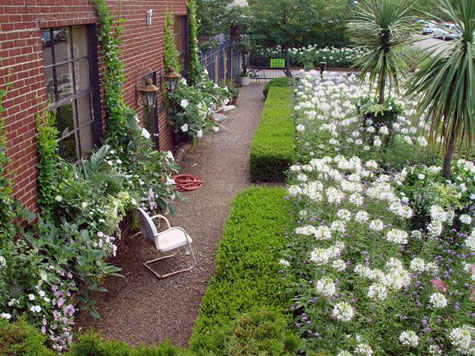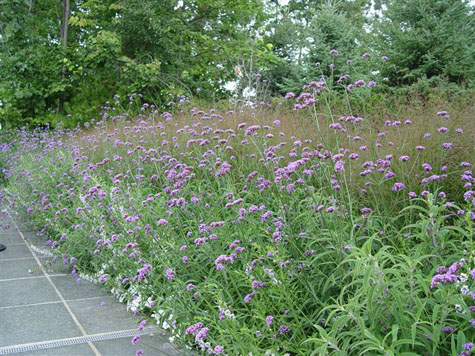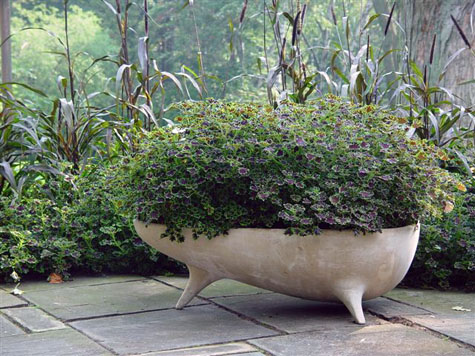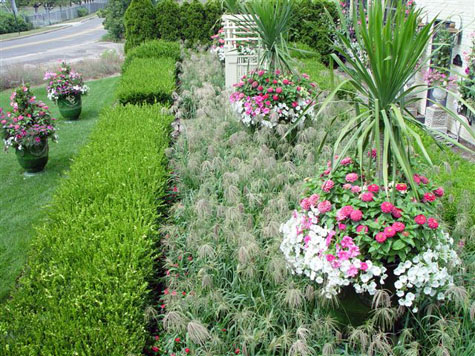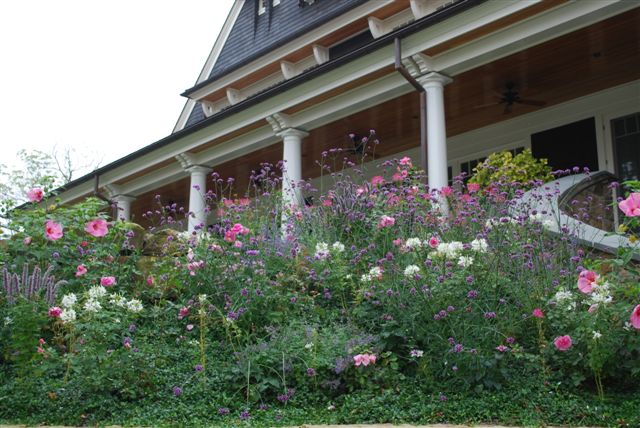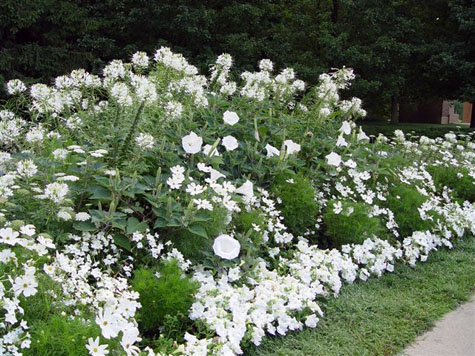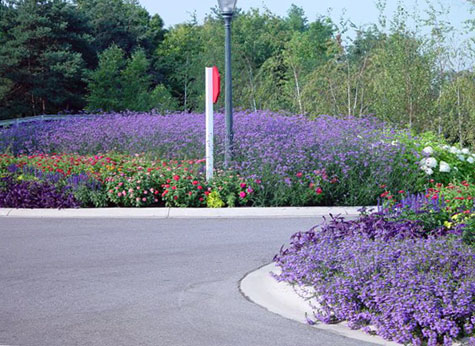I have become very interested in gardening in containers in the last 10 years; how enchanting to have the option of ignoring the demands of in ground cultivation. I like composing and planting them, even though I know my notion that I will have control over everything that happens later is an illusion. I choose the composition of the soil, the nutrients, the plants, the location that offers the best light. I can water the pot as a whole, or I can water plants individually. I can introduce plants from South America to those from South Africa, and get them to thrive visually and physically, next to each other. Some containers I might plant with trees, or evergreens, or vegetables; others might have an aura of a roadside meadow. A container might have sculpture, mementoes, a banner-this in additon to the plants. I might use a dead branch as a natural stake for a mandevillea. Some plants are old favorites; some are new to me. Some pots I plant such that grown in, they assume a collective shape quite unlike their individual shapes. Some containers are breathtaking-empty. Knowing when to stop, how to edit-this is an adult skill.
Relative to a plot of land, a container is small. I am less afraid of a small failure than a big one-who isn’t? Thus I try things. I am sure I have planted thousands of pots, and I am ready to plant more. When I was young, I was sure that I would begin at point A, move to B, and shortly therafter, get to Z; voila-perfection. It never occurred to me to wonder what I might do after that triumphant moment. How embarrassing to recall having thought the world revolved around me. In fact, I could learn new things about gardening every day-its a matter of making an effort to listen, and look-not a lack of things I know nothing about. It seems like new things appear to me at a faster rate that they did 30 years ago. I believed that science existed perfect and entire-and therefore perfect understanding was within my reach. The more years I study, and add to my knowledge, the further I seem to be from a definition of the living world beyond its miracle. Now I realize that perfection applies only to diamonds and moments. Not to my ideas, my knowledge, my efforts or my intentions, or my work. I am relieved by this.
How grateful I am there is no best and perfect planting, so I can go on making them.
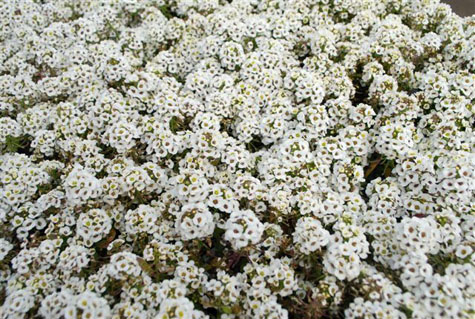
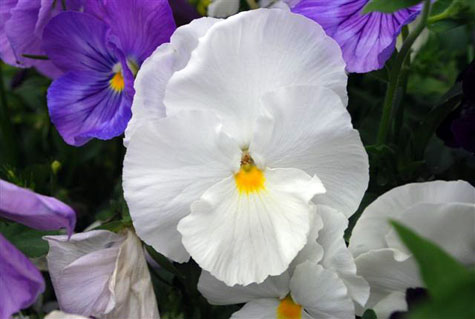



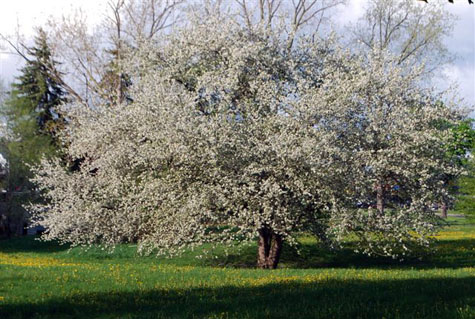
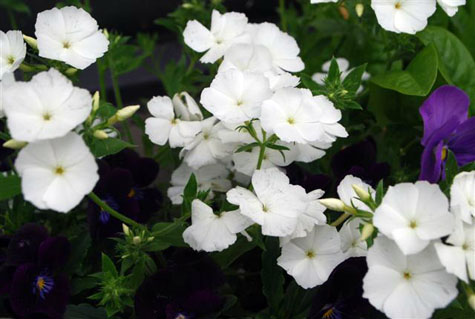
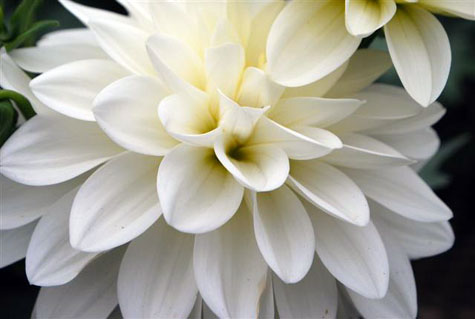
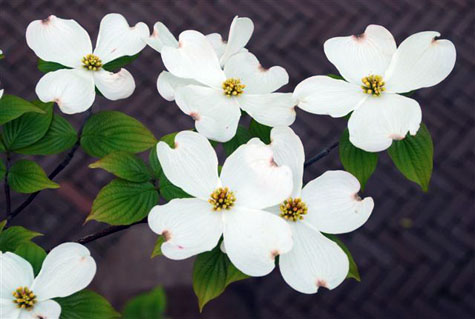


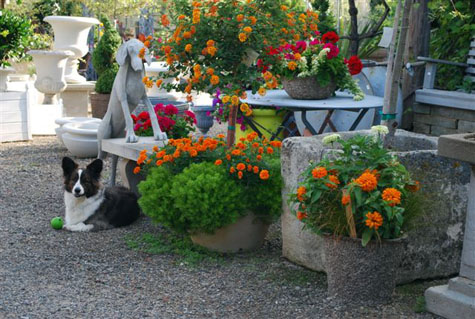
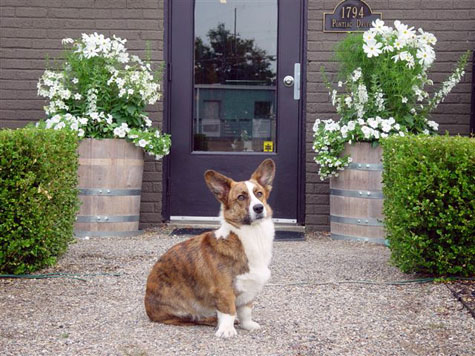
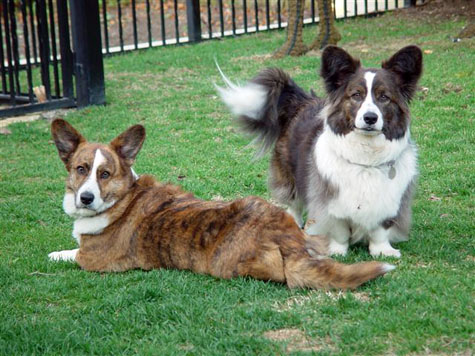
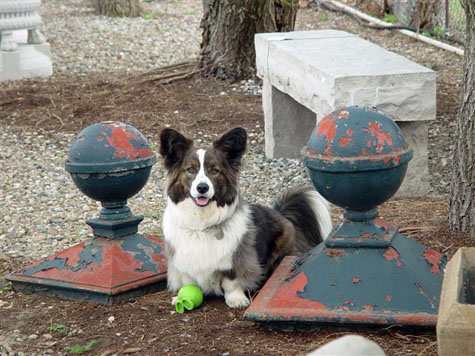


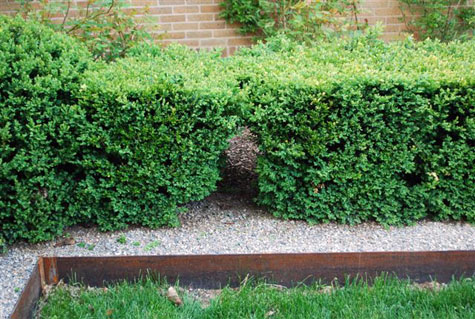

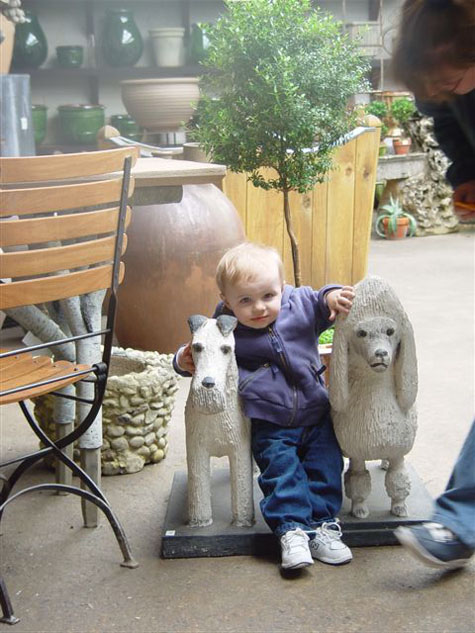
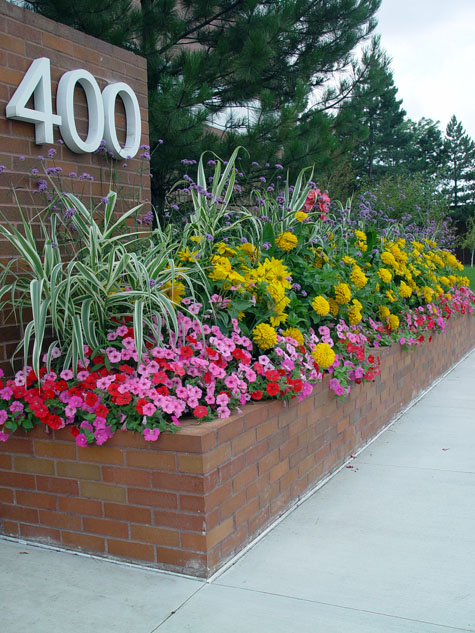 It’s such a good thing that shopping centers and the like plant fibrous begonias and impatiens, in vast quantities, so you don’t have to. The Victorian gardening era in England produced some very inventive schemes for bedding plants. Beautifully designed and executed, they made use of annual plants of compact habit and low maintenance. Many of them were representational in their design-the most familiar of these would be the bedding plant clocks. Only rarely do I see bedding plants done to this level. There are those who plant oceans of uniformly growing fibrous begonias, impatiens, dusty miller and so on, without much in the way of interesting design-just lots of color. I like color as well as the next person, but I am glad this way of planting is being done by others, so I don’t have to.
It’s such a good thing that shopping centers and the like plant fibrous begonias and impatiens, in vast quantities, so you don’t have to. The Victorian gardening era in England produced some very inventive schemes for bedding plants. Beautifully designed and executed, they made use of annual plants of compact habit and low maintenance. Many of them were representational in their design-the most familiar of these would be the bedding plant clocks. Only rarely do I see bedding plants done to this level. There are those who plant oceans of uniformly growing fibrous begonias, impatiens, dusty miller and so on, without much in the way of interesting design-just lots of color. I like color as well as the next person, but I am glad this way of planting is being done by others, so I don’t have to.